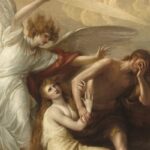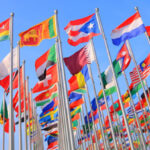We explain what Romanticism is. its characteristics and how this movement emerged. Also, its themes and main exponents.
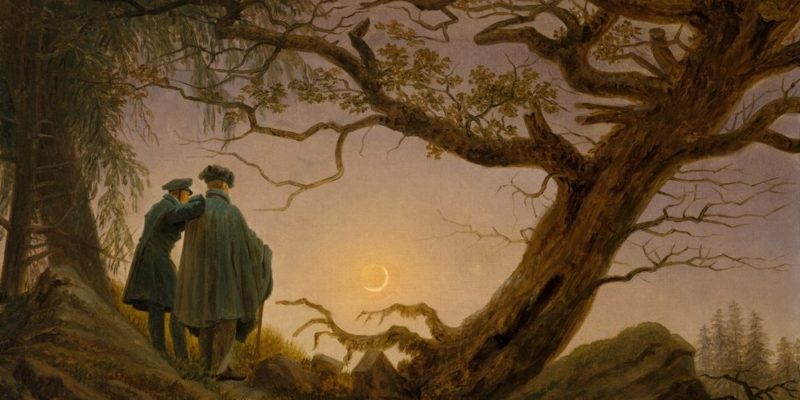
(Caspar David Friedrich. Two men look at the moonca. 1830)
What is Romanticism?
Romanticism was a cultural, artistic and literary movement that occurred at the end of the 18th century in England and Germany and spread to other countries in Europe and America. It arose as a reaction against the ideas of the Enlightenment (which was based on rationalism) and Neoclassicism (which claimed the forms of classical Antiquity).
He stood out through music, art and literature for his search for emotionality and melancholy.
The authors of Romanticism sought inspiration in country or rural spaces. They understood nature as a powerful force, source of great mysteries, and they related these characteristics to the human spirit. Romantic works compared the impetus of human beings to the energy of a vigorous storm.
Other themes of Romanticism were: melancholy (as an invitation to reflect on the place of the human being in the universe, individual will, nostalgia and passions), dreams, the impossible and the improbable, fantastic visions, legends , myths and supernatural beings.
Vampires, ghosts and monsters appeared in literature; in painting, landscapes and misty atmospheres and unreal scenes, and in music, exalted and intense melodies.
See also: Baroque
Origin and expansion of Romanticism
Some authors consider that Romanticism began with the “Lyrical Ballads”, a collection of poems by William Wordsworth (1770-1850) and Samuel Coleridge (1772-1834), from 1798. Others, however, claim that the movement began a decade before.
In Germany, Romanticism in literature arose from the hand of Johann Wolfgang von Goethe (1749-1832), Clemens Brentano (1778-1842) and the brothers Wilhelm (1786-1859) and Jacob Grimm (1785-1863). Within the field of philosophy, the following stood out: Johann Friedriche Schelling (1775-1854), Gottlieb Fitchte (1762-1814), Georg Wilhelm Friedrich Hegel (1770-1831) and Immanuel Kant (1724-1804).
After the French Revolution In 1789, Romanticism penetrated France with authors such as François-René de Chateaubriand (1768-1848), Alexandre Dumas (1802-1870), Théophile Gautier (1811-1872) and Victor Hugo (1802-1885). The latter wrote in 1827 the preface to Cromwell, which was taken as a manifesto of the romantic movement.
Romanticism came to the United States through writers like Edgar Allan Poe (1809-1849), James Fenimore Cooper (1789-1851) and Washington Irving (1783-1859).
In Spain it had its peak around 1830, but in 1840 realism began to make its way. Among the most prominent exponents of Romanticism in Spain we can mention the writers Mariano José de Larra (1809-1837), Enrique Gil y Carrasco (1815-1846) and Gustavo Adolfo Bécquer (1836-1870), and the painter Francisco José de Goya (1746-1828).
In Latin America Romanticism rescued indigenism and the national past to shape the identity of independent countries. Among the main authors we can highlight Esteban Echeverría (1805-1851), Andrés Bello (1781-1865) and José Mármol (1817-1781), among others.
Characteristics of Romanticism

(Joseph Karl Stieler. Beethoven with the manuscript of Missa solemnis. 1820)
Valued individual expression
Romanticism exalted the figure of the individual as the center of creation and emphasized his freedom, autonomy, imagination and creativity. It celebrated distinctive and unique artistic manifestations.
He defended originality
The authors of Romanticism moved away from rational and logical search, and instead pursued subjective expression, experimentation, spontaneity and novelty as pillars of creative production.
exalted nationalism
Romanticism highlighted the values, history and cultural identity of the people. Because it emerged in a context of independence processes and great political transformations, it valued unity and national consciousness, popular traditions, customs and love for the beauty of the local land.
I sought to transmit emotions
Romanticism gave a predominant role to emotions, passion, imagination and feelings over reason. The subjective world was explored in a deep, intense and careful way.
Rejected Neoclassicism
Romanticism opposed the tradition based on rationalism, order and rigidity of Neoclassicism and sought to break with classical and academic norms. He was inspired by times and areas that he considered less rationalistic and more emotional or spontaneous, such as the Middle Ages, natural environments and exotic cultures.
Themes of Romanticism

(Caspar David Friedrich. The walker on the sea of fog (fragment). ca. 1817).
- The exaltation of the self individualism and subjectivity. Romantic authors left aside the idea of universal beauty and became interested in the inner world of the human being with all its conflicts, passions and dark areas.
- The rebel hero idealist, dreamer and dissatisfied with a world that he considers unfair and limiting. He is often a character marked by a tragic destiny.
- The melancholy and disappointment as reflections of an internal break. Romantic artists expressed in their works the feeling of disappointment and disillusionment they felt regarding the reality of their context and life in general. That is why his works were full of sad landscapes and dark and tormented characters.
- The evasion as a means of escape of a disenchanted life. The Romantics sought to create fantastic and mysterious worlds, far from their immediate reality, in areas such as the Gothic, the exotic, and medieval ruins.
- The wild and hostile nature. For Romantic artists, nature was an organic and living whole. Unlike what happened in Neoclassicism, which understood the natural world as a setting or a tamed force, Romanticism recounted raging, stormy and powerful forests, landscapes and mountains, with which human beings interacted intensely.
- freedom. Romantic freedom appears as a theme and as an aesthetic and stylistic search. Romantic authors were not bound by the laws of classical meter, but rather sought new poetic forms, images and metaphors.
- Originality and creativity Faced with the literature of imitation of classical models that Neoclassicism had proposed, Romanticism aspired to the most authentic, unique, spontaneous and original expression of art. Romantic authors valued subjectivity and inner emotion above any canon or norm.
- love and death. Romantic authors appreciated the love of a couple and made it a central theme in their works. They considered it a powerful force that could lead to absolute happiness but, at the same time, remember the finitude of life and the inevitability of death.
- The poet as a demiurge (creator). Romanticism saw poets and artists as beings capable of creating great worlds and fantasies from nothing thanks to the power of their imagination.
- The unfinished and imperfect work. Unlike the perfection that Neoclassicism sought, romantic authors valued imperfection and open work, far from certainties or definitive truths.
Representatives of Romanticism

(Francisco de Goya. Luck of Rods1824).
Among the most prominent representatives of Romanticism in letters, music and painting are:
Writers of Romanticism
- Johann Wolfgang von Goethe (1749-1832). He was a German poet and novelist. Together with Johann Gottfried Herder, he created “Sturm und Drang”, the literary movement that began German Romanticism with its ideas of individuality, subjectivity of the artist and emotionality. Among his most notable works are: Splendor, Prometheus and The misadventures of young Werther.
- Alexandre Dumas (1802-1870). He was a French novelist and playwright, one of the greatest exponents of Romanticism in his country. His work gained great popularity with titles such as The three musketeers, The Count of Monte Cristo and twenty years later.
- Victor Hugo (1802-1885) He was a French poet and playwright, considered one of the most important authors in history and one of the main exponents of literary Romanticism. Among his most notable works are: Les Miserables, Our Lady of Paris and Cromwell.
- Edgar Allan Poe (1809-1849). He was an American writer and poet, a world leader in the short story. In addition, he contributed to the development of the gothic novel, horror stories, detective stories and science fiction. Among his most recognized stories are: “The Black Cat”, “The Raven” and “The Murders in Rue Morgue”.
- Emily Bronte (1818-1848). She was a British writer. His work Wuthering Heightswhich he wrote under a male pseudonym, is considered the maximum expression of English literary Romanticism.
- Gustavo Adolfo Bécquer (1836-1870). He was a Spanish poet, also prominent in narrative and journalism. He was part of late Romanticism and is recognized for his lyrics full of sensitivity. Among his most notable works are “Rhymes” and “Letters from my cell.”
Romantic Musicians
- Ludwig van Beethoven (1770-1827). He was a German composer and pianist, recognized worldwide for his works for piano and his symphonies, among which the Symphony No. 9 in D minor, Op. 125 and the Symphony No. 5 in C minor, Op. 67. It represented the end of German classicism and the beginnings of Romanticism. He was one of the greatest and most influential composers in the history of music worldwide.
- Carl Maria von Weber (1786-1826). He was a German composer and conductor, considered a key figure in the development of romantic opera. He composed fundamental operas for the genre, such as The poacher and Oberon.
- Richard Wagner (1813-1883). He was a German composer and conductor, as well as a playwright, poet and music critic, considered a fundamental reference in the history of opera. It revolutionized the genre and laid the foundations for modern opera. He composed and produced operas such as Tristan and Isolde, The Ring of the Nibelung and The Valkyries.
- Frederic Chopin (1810-1849). He was a Polish composer and great pianist, a reference of European Romanticism. Among his most notable works are the Nocturnal (pieces of a lyrical and melancholic character) and the Polonaise Op. 53 in A flat major, also known as heroic polonaise.
- Franz Schubert (1797-1828). He was an Austrian composer. He gained great popularity after his death. He stood out in the composition of symphonies, operas and sacred music. Among his most recognized works are: Trout Quintet and the Symphony No. 8 in B minor, D. 759also known as unfinished symphony.
Painters of Romanticism
- Caspar David Friedrich (1774-1840) ). He was a German painter, considered a reference of 19th century Romanticism in that country. In works like The walker on the sea of fog and Abbey in the oak grove His representations of mysterious and sublime landscapes stand out.
- Francisco José de Goya (1746-1828) He was a Spanish painter, considered one of the most important artists in the world. Oil paintings, drawings and murals stand out in his work. The naked maja, The dressed maja and The family of Charles IV They are some of his most representative works.
- Eugene Delacroix (1798-1863) He was a French painter and one of the greatest exponents of Romanticism of the 19th century. His work is characterized by the intensity of colors and his treatment of themes such as war, freedom and religion. Freedom leading the people and The death of Sardanapolo They are two of his most recognized works.
- William Blake (1757-1827) He was an English painter, printmaker and poet. He understood poetry and painting as parts of the same art and used both disciplines together to create works such as engraving. The ancient of days or the collection of illustrated poems Songs of innocence and experience.
- Joseph Mallord William Turner (1775-1851). He was an English painter. He stood out in landscapes in oil and watercolor, in which he portrayed the relationship between nature and human beings. Among his most recognized paintings are Hannibal crossing the Alps and The burning of parliament.
literary romanticism
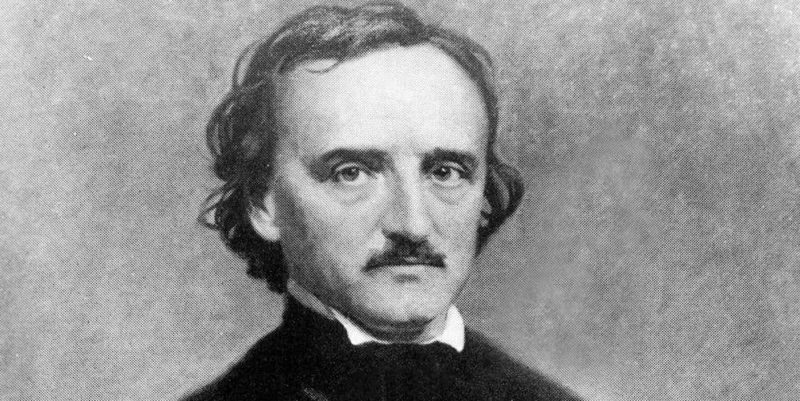
Literary Romanticism developed from the 18th century onwards. It started in Germany and then spread to the rest of Europe and America.
The works produced during this period were characterized by leave aside rational search, privilege imagination and address emotions intensely.
The literature of this time broke with classical and academic structures. Developed new formats and genres like the gothic novel and the historical novel. In addition, it rescued the national identity and cultural heritages of the past.
The artists of Romanticism were characterized by seeking creative freedom and highlighting their individuality and subjectivity. They used writing to convey their emotions and sensitivity and turned to nature as a source of inspiration. The figure of the romantic writer as a rebellious individual immersed in feelings of melancholy and incomprehension became famous as a cliché of the movement.
musical romanticism
Musical Romanticism was characterized by the search for new artistic forms to express emotions and feelings through music.
The artists who were part of this movement managed to create a freer field of musical composition in which they were able to express themselves in a more intense, subjective and personal way.
During this period There was a growth in orchestras with the incorporation of new instruments and the symphony and opera were developed. Many of the most popular compositions in history were made during Romanticism, such as the symphonies of Ludwig van Beethoven or the operas of Richard Wagner.
Romanticism Painting
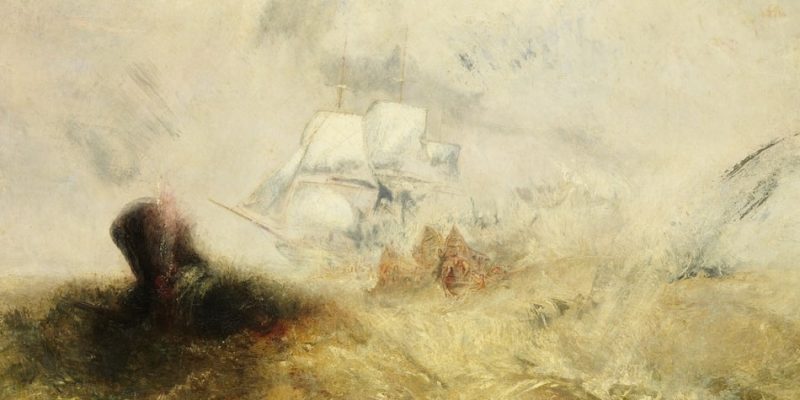
(JM William Turner. whalersca. 1845).
Romanticism painting was characterized by give visibility to emotions, individuality and imagination. He rescued the heritage of medieval culture in opposition to the models of classical antiquity that Neoclassicism had recovered.
The artists of Romanticism gave value to subjectivity and individuality. They left reason aside and privileged the dreamlike (the world of dreams), passion, imagination and the implausible. avoided commissioned work since they painted according to the dictates of inspiration, which they considered the fundamental creative source.
In romantic paintings The representation of landscapes, nature stood out and its relationship with human beings as a source of inspiration.
Romanticism Architecture
The architecture of Romanticism sought to put an end to the Neoclassical style. for that rescued styles from previous eras especially medieval Gothic.
Romanticism took the bases of past architectural styles (a trend called historicism) and added new features and details. These adaptations varied according to each country and the prefix “neo” was prefixed to differentiate them from the originals.
Thus, the neo-Gothic appeared, represented in Fonthill Abbey in England; the neo-Mudejar, exemplified in the Seville-Plaza de Armas Station in Spain, or the neo-baroque, shown in the Alferaki palace, in Russia.
References
- Calley Galitz, K. (October 2004). Romanticism. Met Museum. https://www.metmuseum.org/
- Fleming, W., Blengio, R., & González JE (1986). Art, music and ideas. Interamerican.
- Souriau, É. (1998). Aesthetics Dictionary. Akal.

